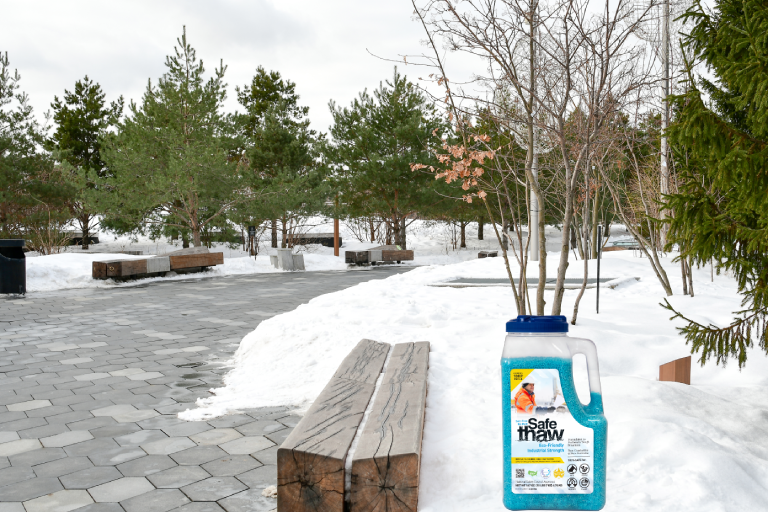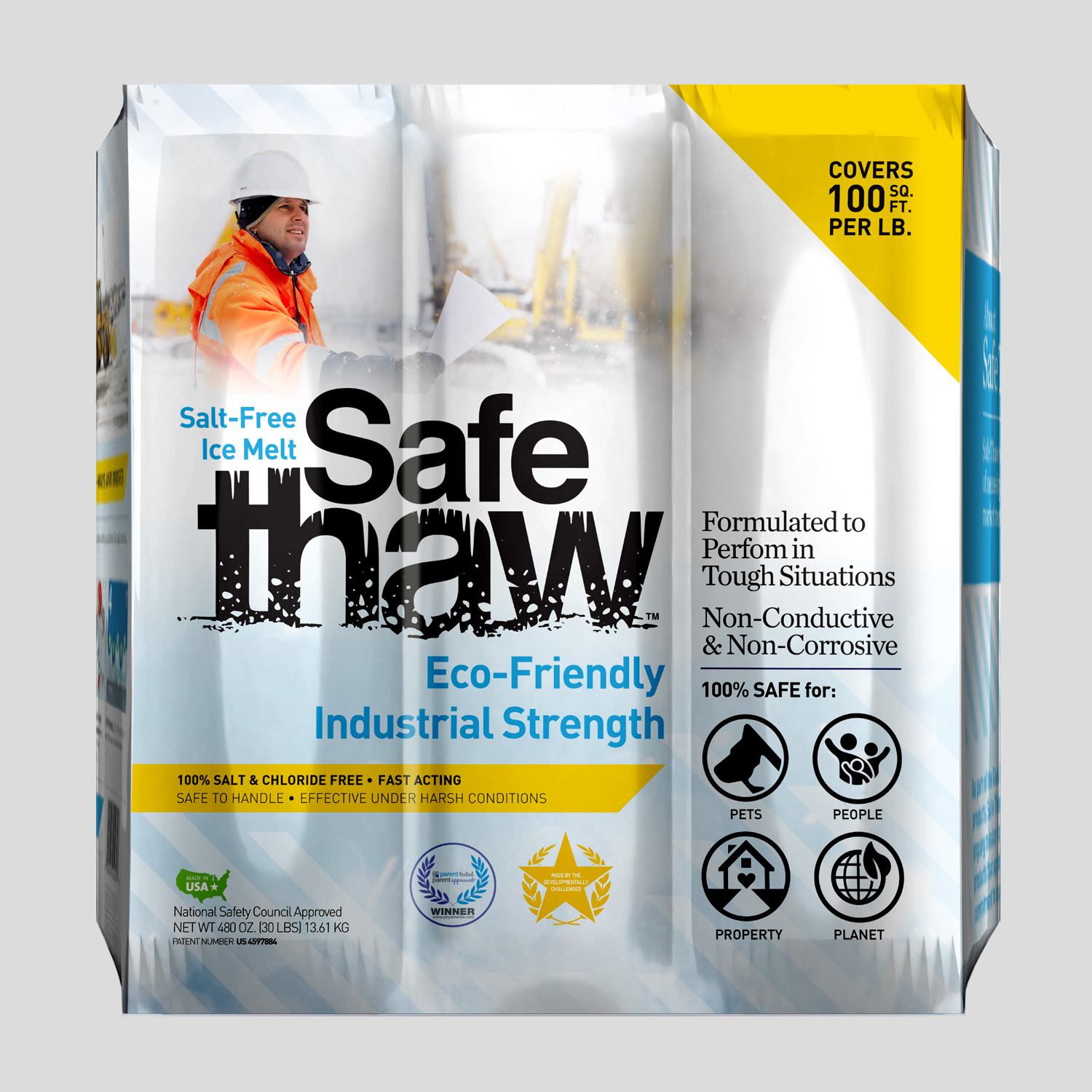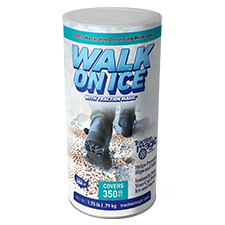What Temperature Does Salt Melt? Understanding Its Freezing Point Depression

Think back to a chilly winter morning. You awaken to see a shimmering blanket of frost outside, your once-clear pathway, now an ice rink. You grope for the familiar sack of salt and scatter it across the icy terrain. Almost like magic, the ice begins to dissolve. “What temperature does salt melt?” you ponder as you sip your steaming coffee.

Blizzards Are Here—Stock Up on Safe Thaw Today!
Safe Thaw was created as the ice management solution for tough winter environments. Ideal in commercial and industrial properties, shops, government agencies, bridges, and construction.
The Chemistry Behind Salt’s Ice-Melting Superpower
Chemically speaking, salt doesn’t technically ‘melt’ ice. Instead, it causes freezing point depression, a fancy term that implies it lowers the freezing point of water. A solution of water and salt freezes at a lower temperature than pure water, which is why roads are salted in cold conditions. The water molecules are more interested in interacting with the salt ions than each other, resulting in less solid ice and more liquid water.
On A Fair-Weather Friend: The Limitations Of Salt
Alas, our good friend salt isn’t always the knight in shining armor it appears to be. Using salt as an ice melt has a host of negative effects. In large quantities, it can be harmful to pets, vegetation, and local water sources due to runoff. Moreover, it’s not always effective in extreme cold temperatures.
Winter Storms Are Here!
Stay Safe with Our 100% Salt And Chloride-Free, Pet Safe Ice Melt.
The Concrete Conundrum
The plight of our concrete surfaces under the onslaught of salt deserves a special mention. Concrete driveways, in particular, take a hit as the thawing and refreezing process can lead to cracks and potholes. Consequently, using salt on your driveway might seem like a quick solution but may lead to costly repairs down the line.
Presenting Safe Thaw: The Game Changer
Now, let’s imagine a world where you could melt ice effectively without these side effects. Enter Safe Thaw, a product that respects both the environment and your property. Safe Thaw works wonders on concrete driveways and business premises, is kind to machinery, and poses no threat to concrete surfaces.
A word of caution: regardless of the product used, no ice melt should be applied to concrete that is less than 12 months old. Young concrete is more susceptible to damage, so be patient and let it age a bit before using any ice melting products.
100% Salt & Chloride-Free Ice Melt for Winter Storm Protection.
The Freezing Point Finale: How Cold Is Too Cold For Salt?
So, at what temperature does ice melt at? At what temperature does salt cease to be effective as an ice melt? Typically, salt will start struggling when the thermometer dips below 20°F (-6°C). It’s at these chilling temperatures that products like Safe Thaw come into their own.
In conclusion, understanding the behavior of salt in cold temperatures can help us make more informed decisions about handling ice. While salt has its place, more sustainable and less damaging alternatives like Safe Thaw are worth considering for our driveways and walkways. It’s a small step we can take towards a safer winter, a happier environment, and a long-lasting driveway.
Try Also Our Other Winter Safety Products:
Safe Paw
The Original and #1 Selling Pet and Child Safe Ice Melt for over 20 years. Guaranteed environmentally safe –It won’t harm animals or children, and it won’t damage your property. That’s Safe Paw. Safe Paw can change how winter affects our planet.

Walk On Ice
The handy disposable canister can be taken everywhere, with the same 100% naturally occurring minerals that provide instant traction on ice or snow. Use it on sidewalks, steps, or as an instant traction agent for your car.



